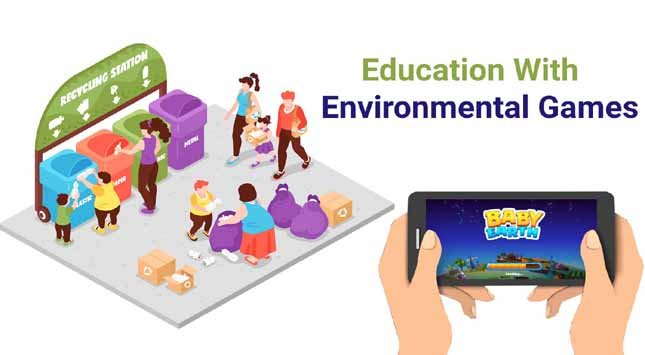Thinking about the environment isn’t just for activists and policymakers anymore. In the modern business world, it has become a critical part of the decision-making process.
Enter environmental due diligence: a term that might sound complex but has a straightforward mission at its core. it is all about considering how business activities affect Mother Earth and aligning those activities with sustainable practices.
Whether you’re investing in a new property, merging with another company, or starting a project, environmental due diligence helps you understand the potential ecological impacts. This understanding can lead to better decisions that reflect not only what is good for the bottom line but also what is good for our planet.
Understanding Environmental Due Diligence
So, what exactly is environmental due diligence? it is a thorough investigation and analysis of potential environmental liabilities associated with a particular business operation or transaction. Imagine buying a piece of land that looks perfect for a new factory, only to find out later that it is contaminated with hazardous waste.
Without conducting environmental due diligence, you’d be caught off guard, facing legal and financial nightmares. This process helps in identifying environmental risks early on, ensuring compliance with environmental regulations, and ultimately protecting your investment. It may include assessments like Phase I and Phase II Environmental Site Assessments (ESAs), checking for contaminants, evaluating compliance with environmental laws, and much more.
It is like doing your homework before making a significant life decision, except, in this case, the subject is our precious environment. it is not just about avoiding negative consequences; it is about embracing responsibility and playing a part in the bigger ecological picture.
Technology and Environmental Assessments
- Embracing the Digital Age: Environmental assessments have come a long way from manual data gathering and analysis. Modern technology has streamlined the process, making it more efficient and precise. From GIS (Geographical Information System) mapping to drone imaging, tech tools are changing the game.
- Powerful Software and Tools: Specialized software like environmental management systems (EMS) and environmental data analytics tools can facilitate detailed analysis. These tools can quickly analyze large data sets, present insights visually, and help businesses understand their environmental impact in real-time.
- Remote Sensing Capabilities: Drones and satellite imaging provide new perspectives on environmental conditions. These technologies allow for remote monitoring, ensuring accurate and up-to-date information.
- Integration of AI and Machine Learning: Artificial intelligence and machine learning can assist in predictive modeling, risk assessments, and trend analysis. By utilizing these advanced technologies, businesses can anticipate environmental changes and adapt proactively.
Utilizing the Right Resources
Wetlands might sound like just muddy spots on the planet, but they’re crucial for our environment. Think of them as nature’s kidneys, filtering water and hosting a ton of wildlife. When a business has a project in mind that could bump into these areas, it needs to take a good, hard look at the potential impact.
Now, this is when the “national wetlands inventory map” becomes a great resource. Imagine you’re planning a construction project, and you want to make sure you’re not stepping on Mother Nature’s toes. This map, packed with details about where wetlands are and what they’re doing, becomes your go-to guide.
And then there is stuff like Transect’s Wetlands Map. Picture the national map but with turbochargers. User-friendly, and packed with features, it provides the kind of view that helps you understand what is happening on the ground.
In the end, using these tools is about more than just following rules. it is about knowing the geography, respecting what is there, and making choices that align with the bigger picture. So when you dive into a project, tools like these make sure you’re doing it with both eyes wide open.
Benefits of Integrating Technology in Environmental Due Diligence
Efficiency and Accuracy
Ever tried to fit a square peg in a round hole? This is how traditional methods of environmental due diligence can feel like. They often lead to a lengthy and expensive process. Enter technology, the square hole for our square peg.
By incorporating the latest tools and software, businesses can streamline the process, getting quicker and more accurate results. Imagine cutting down weeks of labor-intensive research to just a few clicks of a button. That is not just saving time; it is making room for more informed decisions, too.
Adaptation and Flexibility
The environment isn’t static, and neither are regulations. Technology offers the adaptability to stay current with changing environmental conditions and legal requirements. Businesses can update their practices on the fly, ensuring that they’re always in line with the latest guidelines.
Real-World Case Studies
- Small Manufacturing Firm: One small manufacturing firm was grappling with how to expand its facility without disrupting nearby wetlands. With the use of specialized mapping tools, they pinpointed the best location, saving time and costly legal battles.
- Urban Development Project: In another instance, an urban development project was able to utilize technology to identify potential environmental risks in their planned area. By addressing these issues early in the planning stage, the project not only stayed compliant but even won awards for its environmental stewardship.
- Energy Company’s Strategy: An energy company implemented a comprehensive environmental due diligence strategy, integrating various technology tools. This move allowed them to quickly assess potential sites for new energy projects, ensuring they were choosing locations with minimal environmental impact.
Enhanced Communication and Collaboration
One of the hidden gems in the technology treasure chest is how it fosters better communication between different stakeholders. Whether it is engineers, environmentalists, or regulators, technology ensures that everyone is on the same page. Collaboration becomes smoother, and projects are more likely to move forward without misunderstandings or conflicts.
The sum total of all this? Technology in environmental due diligence isn’t just a fancy add-on. it is a game-changer. it is transforming how businesses understand and interact with the environment, making it easier for them to be both profitable and responsible. In other words, it is like having your cake and eating it too! But in a responsible and earth-friendly way, of course.
Final Word
Environmental due diligence isn’t a trendy buzzword; it is a crucial part of responsible business. And in our rapidly changing world, using the latest technology is not just smart; it is essential.
From digital maps like the “national wetlands inventory map” to cutting-edge software, these tools are transforming how businesses interact with the world around them.
So, if you’re in the business of, well, business, it is time to hop on this tech train. Your wallet, your schedule, and maybe even a frog or two in a wetland will thank you.






